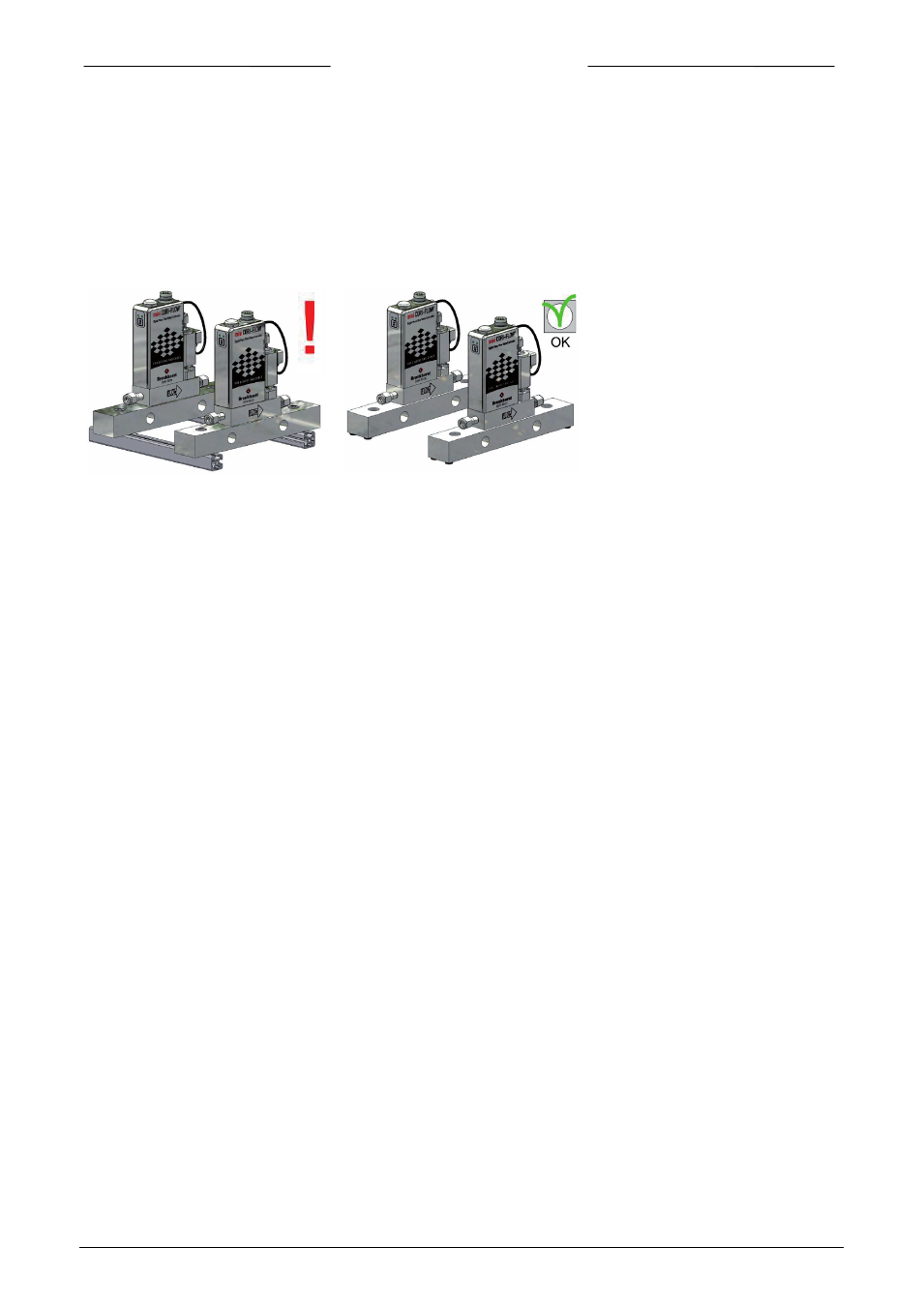Crosstalk, Notes for temperature considerations – Bronkhorst Mini CORI-FLOW User Manual
Page 20

BRONKHORST CORI-TECH B.V.
2.4.12 Crosstalk:
Be carefull when mounting two or more mini CORI-FLOW instruments close together. Vibrations from
one instrument might interfere with the resonance frequency of another instrument. Therefore, for
multiple mini CORI-FLOW instruments: mount them on rigid, stiff bases/masses individually, but
mechanically isolated from each other. Special mounting blocks can be isolated using rubber
suspension or caps for muffling/damping. These mounting blocks can be optionally obtained at your
local sales representative. It is favourable to mount the instruments parallel to each other.
Examples: M30 M31
2.5 Notes for temperature considerations
The mini CORI-FLOW has to be installed in such a way that levels of different temperature within the mini
CORI-FLOW are avoided. Avoid multiple heating and cooling of the instrument.
Temperature shocks have to be avoided in any case. (max. 1°C/sec)
After using the mini CORI-FLOW the first time at low temperature tighten the connector screws again in order
to prevent any leakage!
Please note: if you do not tighten the screws, the leaking connector / fitting can cause damage!
After the first shrinking and tightening of the screws, no further precaution is necessary.
Note that the maximum temperature in the housing of the mini CORI-FLOW is allowed to be up to 70 ºC max.
Also note that a mini CORI-FLOW will have an amount of self-heating due to the power dissipation on the
electronics (DSP). This self-heating can be up to approx. 15 ºC.
It will be at maximum if there is no flow (less cooling).
In practice, there will be a balance between fluid temperature, self heating, cooling effects and ambient
temperature at the instrument.
If the fluid is really hot, it would help if the instrument is in a cool environment. It will also depend on how well
the installation where the instrument has been mounted in/on is capable of cooling.
Anyway, one must take care that the instrument in the housing will not exceed the 70 °C, otherwise the
electronics will be damaged.
To check this, the internal temperature sensor can be used. Via FLOW-DDE/E-7000 or Bright it can be read
out. (FlowDDE par. 142).
Please make sure the temperature value readout here (=actual temperature in housing) will not exceed 70 °C.
On the next page some facts about maximum Tambient and Tfluid:
page 20
9.17.050
